
views
Creating a Base
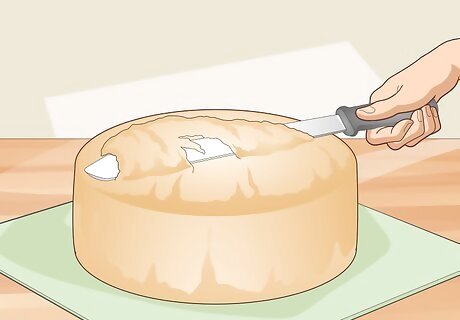
Level out your cake layers with a knife so they are flat. Use a bread knife to cut off the top layer of each cake. Try to make a flat line on the top of each cake so that it creates an even, flat top. It will be much easier to stack your cakes if they’re already level.
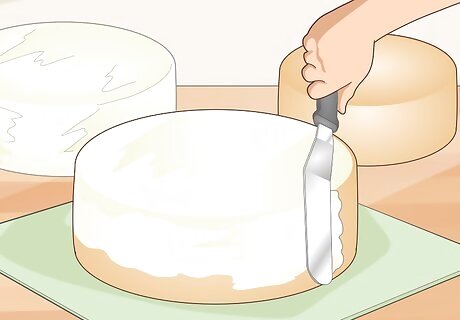
Frost your cake tiers with buttercream so that they are totally smooth. Add a thick layer of buttercream frosting to your cake tiers and use a flat spatula to spread it out. Smooth the frosting out with a bread dough scraper so that it’s totally smooth.Tip: You can also use a layer of fondant over the top and sides of your cake to make sure they’re perfectly smooth.
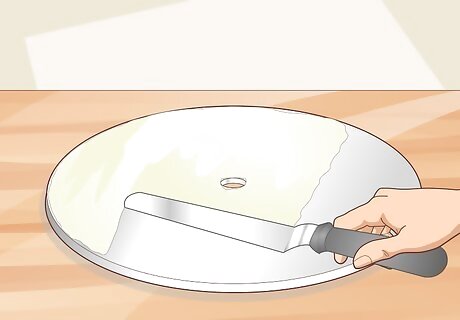
Spread a thin layer of buttercream frosting on a cake plate. Make sure the cake plate you are using is a little bit bigger than your bottom tier. With a flat spatula, spread a thin layer of frosting into the center of the cake plate so that your bottom tier won’t wiggle around. You can find cake plates at most home goods stores.
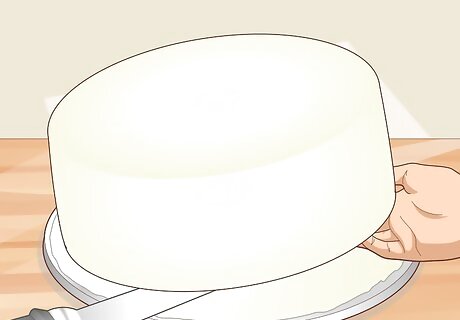
Place your bottom tier in the center of the cake plate. Pick your bottom tier up with a flat spatula, and try to touch it as little as possible. Carefully position your bottom tier on the cake plate so that it’s centered.
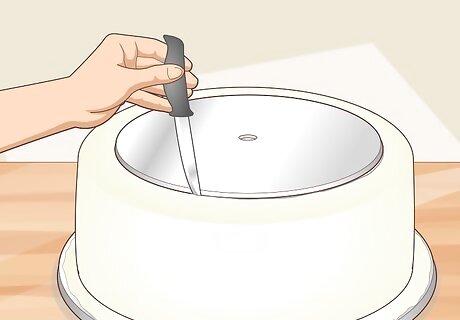
Mark the diameter of the next cake plate on top of the tier. Cake plates, or cake boards, are round discs made of cardboard or plastic that each tier sits on top of, so it’s important to know how large they are before you start stacking your cakes. Position the cake plate for the next tier on the center of the bottom tier, then use a knife to gently outline it on the top of the bottom tier. After that, take the cake plate off and set it aside for later. You can make your own cake boards out of cardboard by cutting out circles that are the exact diameter of each tier, or you can purchase pre-cut cake plates or boards from a home goods store.
Inserting the Dowels and Stacking the Cakes
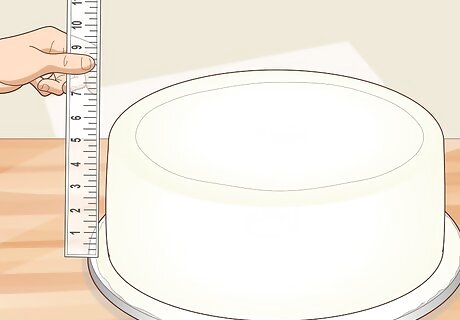
Measure the height of your bottom tier. The dowels that you use will depend on the height of your cake tiers. Use a ruler or a tape measure for an accurate measurement. You can also insert a large straw into the center of the cake and then see how far it goes in.
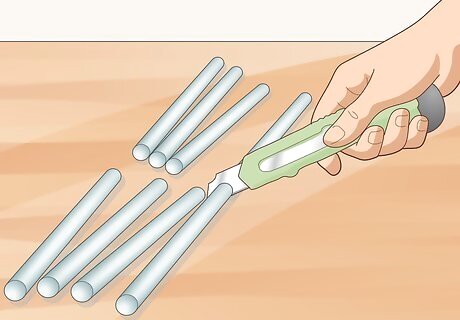
Cut 4 plastic dowels as tall as your bottom tier. Mark the height of your cake onto each dowel with a pencil. Then, use PVC cutters to snip the excess length off of each dowel so that they fit the height of your cake. You can find plastic dowels at most home goods stores. They are thicker and more sturdy than wooden dowels.
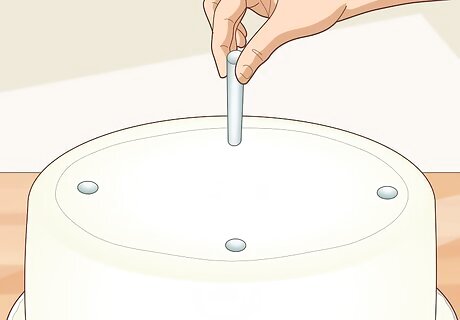
Push the dowels in a diamond around the border of the cake board imprint. Take a look at the impression you made on the top of your tier with your knife. Push 1 dowel into the top of the circle, 1 into the bottom, and the other 2 on both sides of the circle. Make sure they are spaced about the same length apart. The top of the dowels should sit flush with the top of the tier so that they don’t stick out.
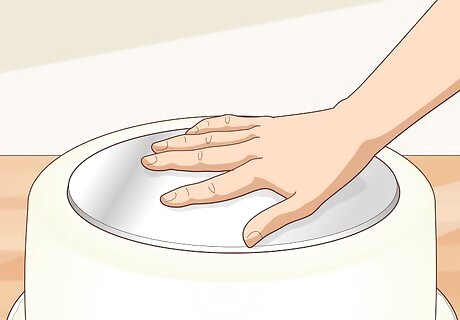
Lay a cake board on top of the bottom tier. Use the cake board that is the same diameter as the next cake tier to protect the top of the bottom tier. Place it on top of the dowels and make sure that it sits flat. Some plastic cake boards have dowels attached to the bottom. If yours does, you can push your cake board into the holes that you made with the plastic dowels.
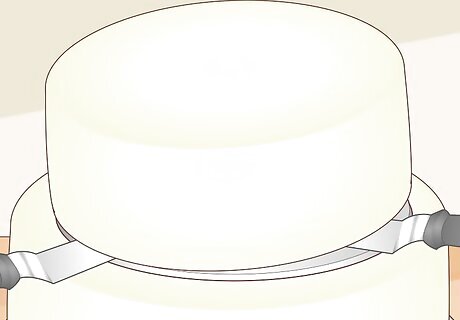
Set the next tier on top of the cake board. Carefully pick up the second tier of the cake with a baking spatula, being careful not to disturb the frosting. Set it gently onto the cake board and then smooth out the frosting if you need to.Tip: Try to touch your cake tiers as little as possible to avoid smudging the frosting.
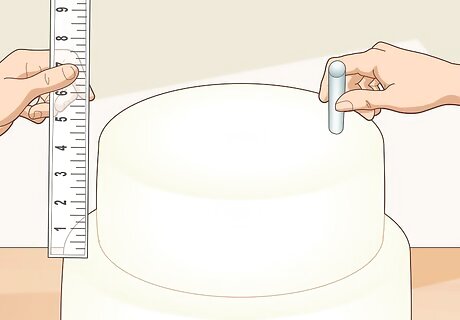
Measure the height of the second tier and insert plastic dowels into it. Find the height of the next tier of your cake and then use your PVC cutters to cut 4 plastic dowels down to size. Position them in a diamond shape in the center of the cake so that they are about 0.5 inches (1.3 cm) apart from each other.
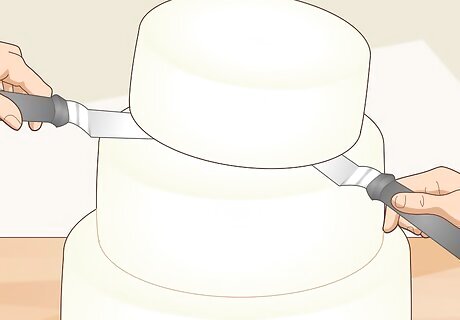
Place the top tier on top without a cake board underneath. If you are working with 4 tiers, insert dowels and cake boards between the second and third tier. If you only have 3, don’t put a cake board on top of the middle tier. The top tier doesn’t need a cake board because it’s the smallest one, so it will just be supported by the dowels underneath it.
Securing the Stack
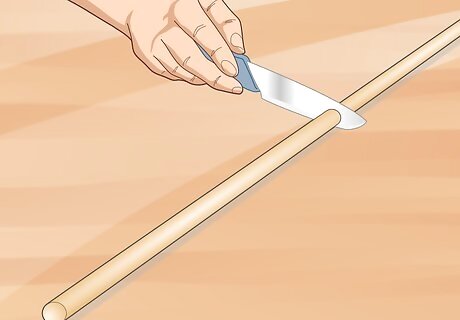
Cut a bamboo stick to the height of your stack. Hold up a sharpened bamboo dowel and mark the top of your cake stack with a pencil. Use your PVC cutters or a knife to cut the excess bamboo stick off so that it is the height of your stack. You can find bamboo sticks at most home goods stores. Bamboo sticks work well for securing cakes because they won’t get soggy like normal wooden dowels and they aren’t as thick as plastic ones.
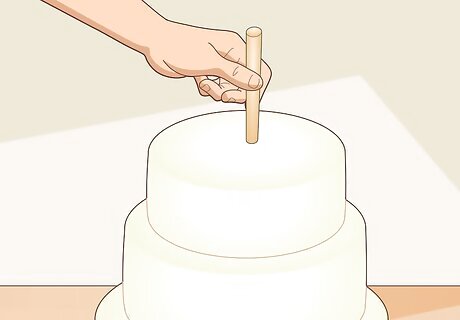
Push the bamboo stick through the center of your stack. Position the bamboo stick in the middle of the top tier. Slowly push it down through all the tiers of your cake until it reaches the bottom. If any of the stick pokes out of the top of the cake, cut it off.Tip: If you are having trouble pushing the bamboo stick through, use a hammer to pound it into the cake.
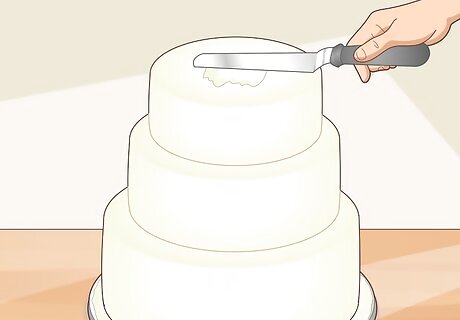
Fill the hole in the top of the cake with frosting. Since the bamboo stick went through the top of the cake, there may be a small, but visible, hole in the top tier. Use some buttercream frosting to patch the hole in the top tier so that you can’t see it anymore. Use frosted flowers or a cake topper to cover up the uneven surface at the top of your cake if you’d like even more coverage.



















Comments
0 comment